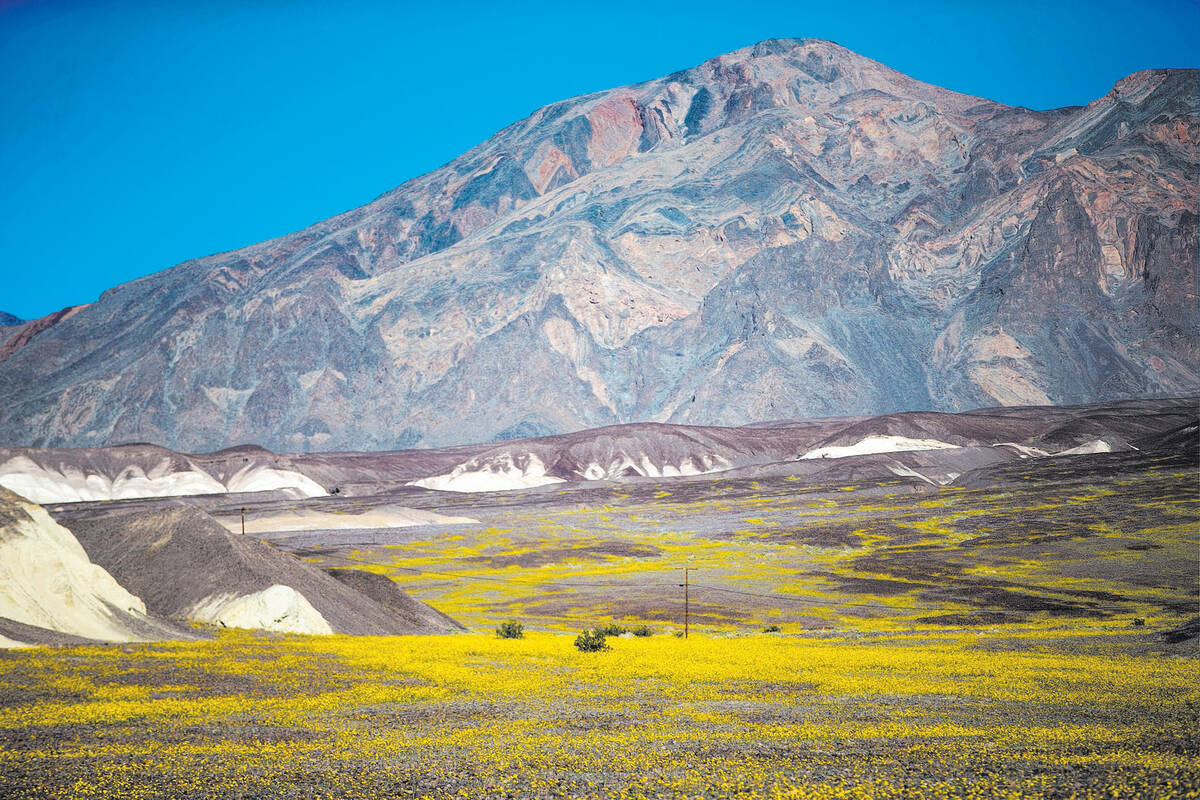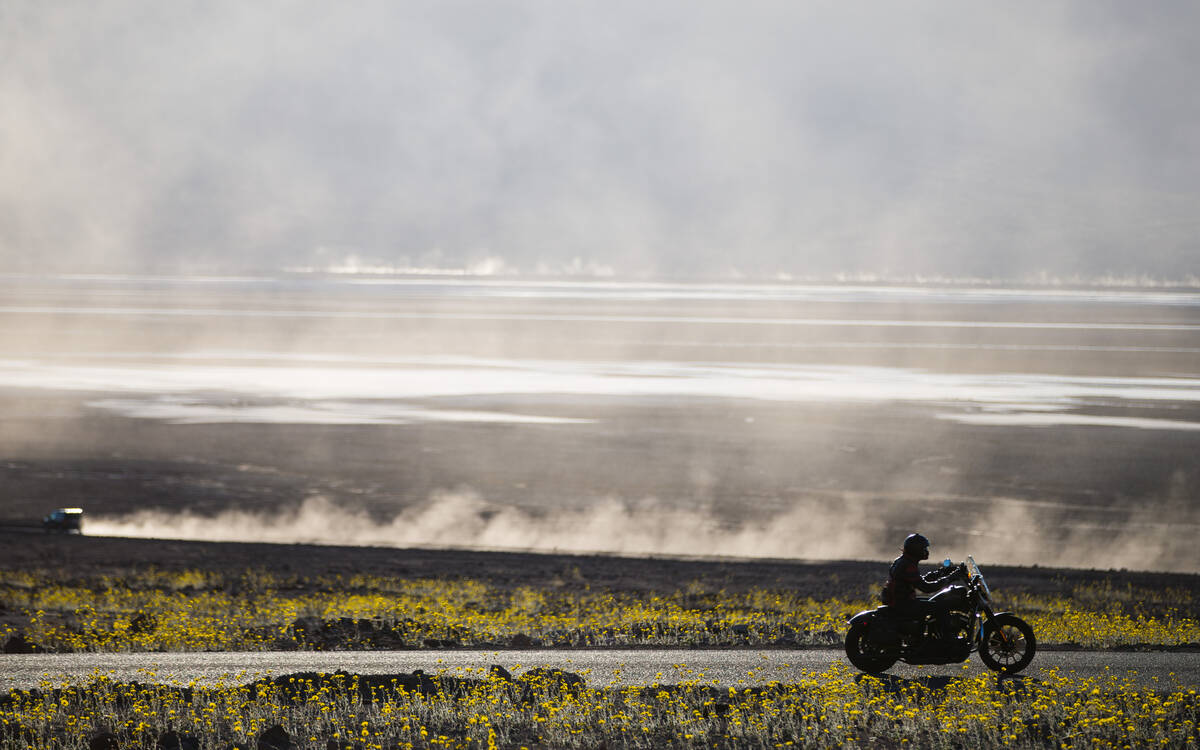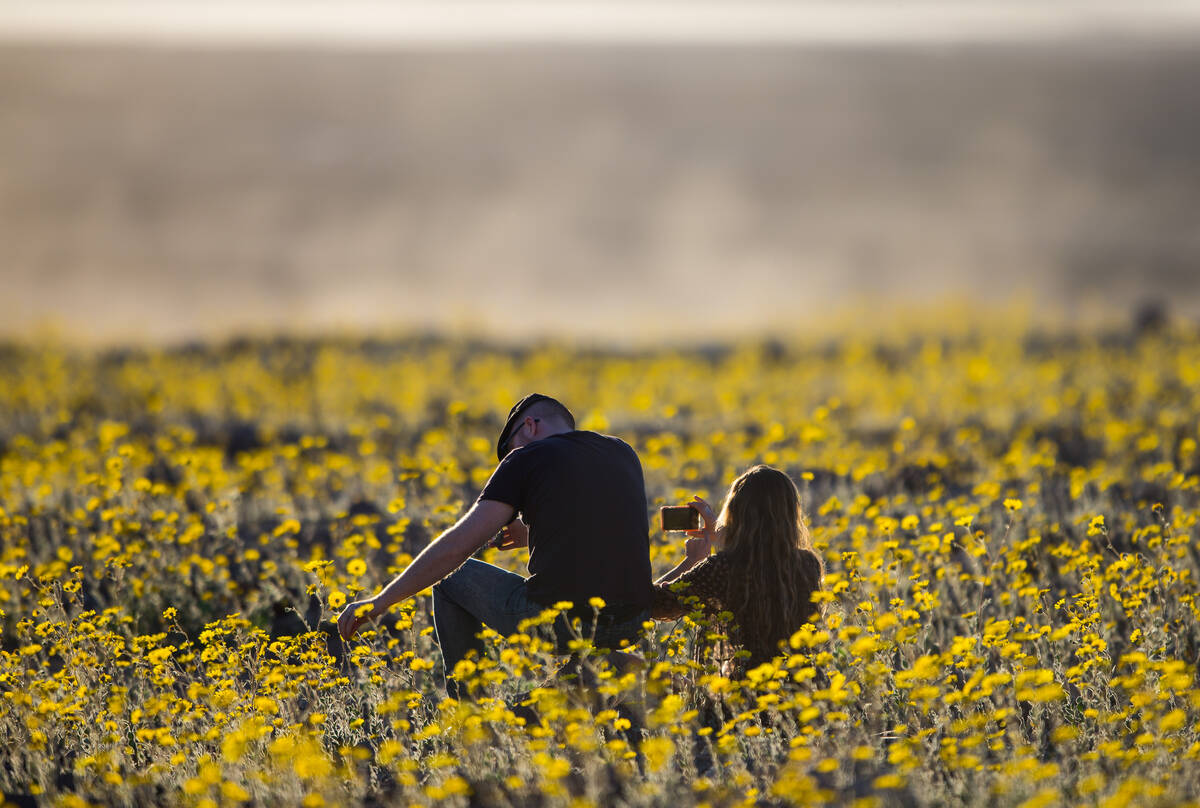Will Death Valley have a superbloom this spring?
April showers might bring May flowers, but even last year’s heavy monsoons might not bring superblooms to most of the desert Southwest.
Death Valley National Park can be home to some of the most spectacular superbloom events out there, covering the valleys in a blanket of vibrant yellow petals. But park officials say that a drier-than-normal fall and winter has dampened expectations for any big showing of flowers this year.
“Death Valley National Park is not predicting a superbloom,” Abby Wines, management analyst for the park, said in an email.
The park saw a torrent of rain last summer, enough to cause intense flooding in the usually arid landscape. But the rains that follow the monsoon season tend to be more important for sparking the big blooms. The superblooms that draped Death Valley’s floors in 1998, 2005 and most recently in 2016 were preceded by October through December rain totals that ranged anywhere from three to eight times the 0.4-inches of rain that normally drops over those three months in the park. This year, the park saw just 0.3 inches in that time frame.
There are already strong indicators that this year won’t be a repeat of those past superblooms. In those years, the flowers had started blooming by the end of January in Death Valley, and as of the first week of February, “and we haven’t seen much yet, ” Wines said.
“If we’re lucky, this will be an average flower year,” she added.
That seems to be the case for much of the region, according to Jim André, who tracks desert flora as director of the Granite Mountains Desert Research Center in California.
“What you can expect is most of the Mojave is not going to have a superbloom,” André said.
Like Death Valley, the Southwest saw a substantial amount of moisture from the summer and early fall monsoons last year. That precipitation helped bring cooler soil temperatures, which can lead to better germination conditions.
But the late fall and winter showers have been hit or miss this year, André said, which means that the majority of the Mojave, including Barstow, Calif., the areas around the Las Vegas Valley and much of Joshua Tree National Park, will look a lot like Death Valley, with average to below average blooms.
There are at least a few places where the wildflowers are expected to put on a show this year, thanks to a series of atmospheric rivers sweeping over the area through much of January that dropped ample amounts of rain along the way.
The eastern Sierra Nevada near Bishop, Calif. should be particularly spectacular this spring, and places along the far western Mojave Desert, like Palmdale, Calif., should be strong as well, according to André.
Flowers should be in full bloom by April and in some northern areas closer to early May. If the tail end of winter is cool and moist, it could extend the flowering season by a few weeks, while a warmer, drier end to the season could move that bloom time up and shorten it, too.
A few places have decided not to wait until spring, with the wildflowers in the Anza-Borrego Desert State Park in Southern California already in full swing and a similar event near Parker, Ariz., André said.
There’s still time for things to turn around, and there are some signs for more rain in the region in the coming week or two. But the overall outlook isn’t great.
“It doesn’t look good because we’re in an extended dry pattern right now,” André said. “The time is really ticking for a superbloom event in these regions.”
Contact Colton Lochhead at clochhead@reviewjournal.com. Follow @ColtonLochhead on Twitter.


























